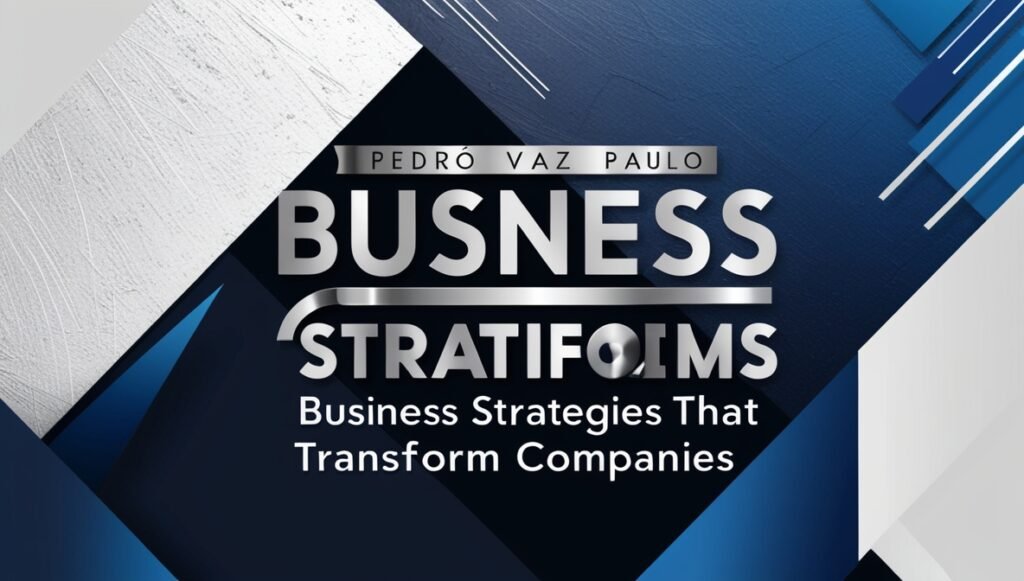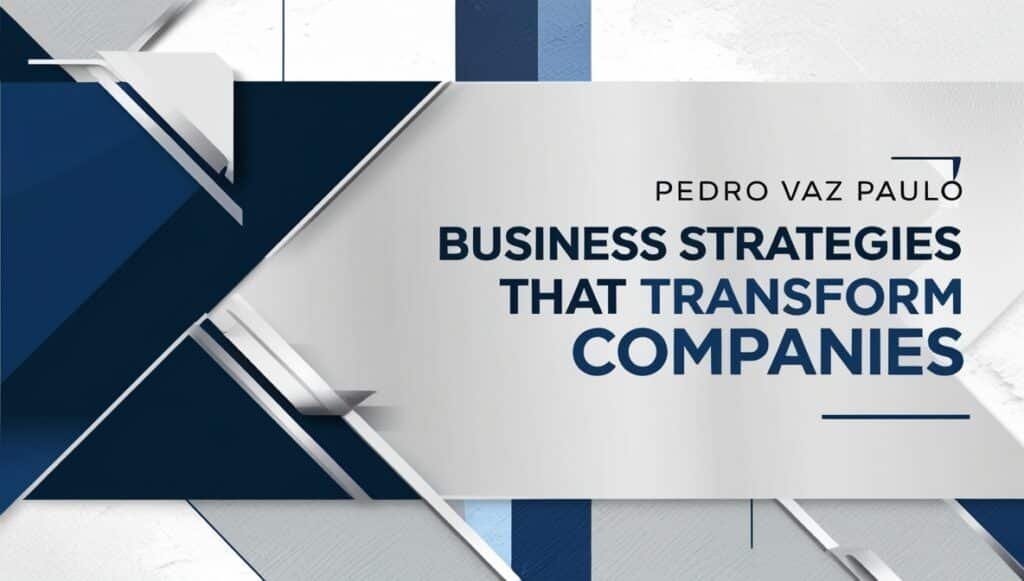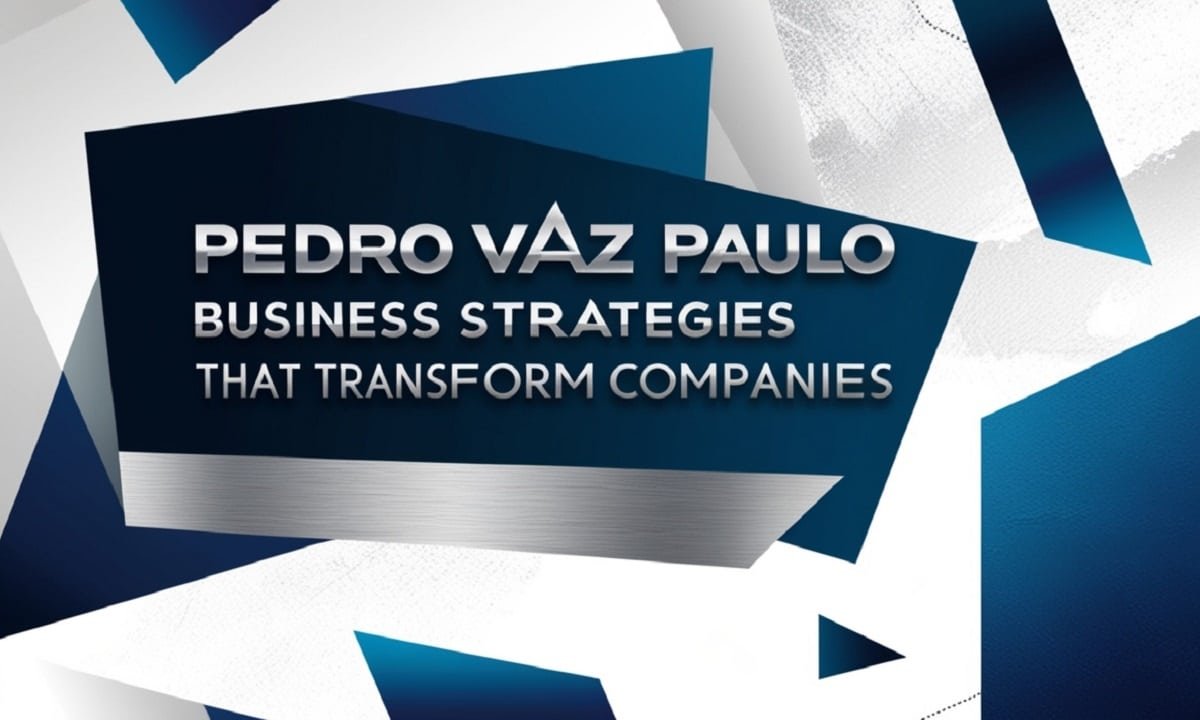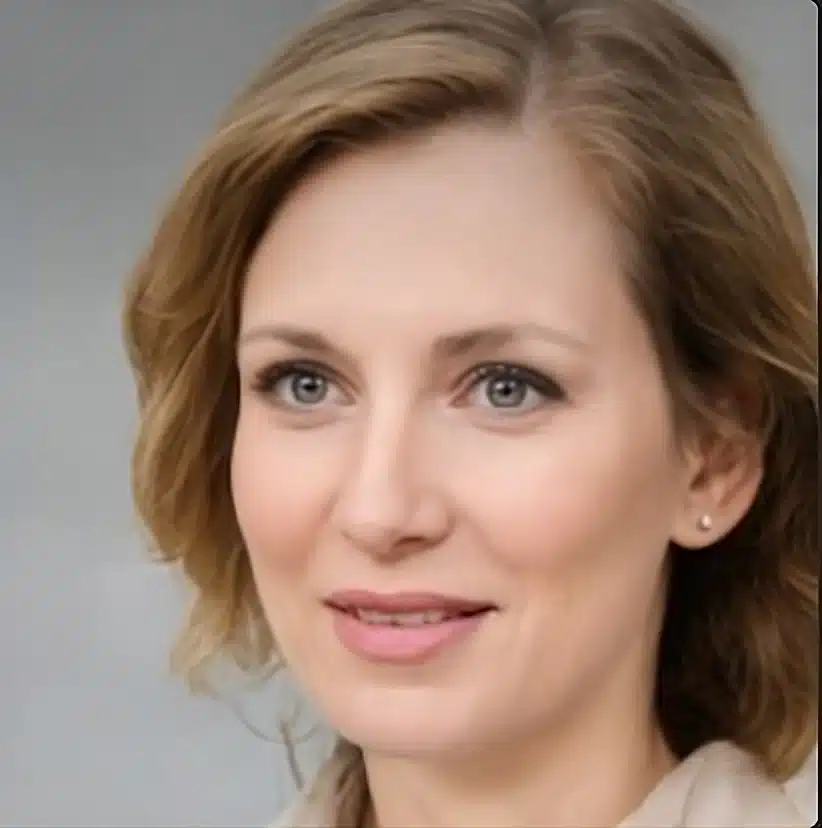Pedro Vaz Paulo has revolutionized how businesses approach growth and profitability. His methods aren’t theoretical—they’re battle-tested frameworks that deliver measurable results. Companies across industries have experienced dramatic transformations under his guidance. This isn’t another generic business advice article. You’ll discover proven Pedro Vaz Paulo Business strategies and methodologies that drive real business growth.
These are the same frameworks that helped struggling companies become market leaders. Whether you’re wrestling with stagnant revenue or seeking competitive advantage, understanding these principles changes everything. Let’s dive into the strategies that separate thriving businesses from struggling ones.
The Evolution of a Strategic Visionary
From Struggles to Solutions
Pedro Vaz Paulo didn’t start at the top of business consulting. Early career setbacks taught him what textbooks never could. He witnessed firsthand how traditional corporate strategies often missed the mark completely. His first consulting project failed spectacularly. The client implemented his recommendations but saw minimal improvement.

This humbling experience sparked a crucial realization about strategic implementation. Business transformation requires more than brilliant analysis—it demands executable frameworks. He spent years studying why some strategies succeed while others collapse during execution.
Defining Moments That Built His Framework
A pivotal breakthrough came with a manufacturing client facing bankruptcy. Traditional cost-cutting wasn’t working. Pedro Vaz Paulo developed a growth framework that simultaneously reduced expenses and increased revenue.
The results stunned industry observers. Within eight months, the company achieved profitability. More importantly, they built sustainable growth mechanisms that lasted years beyond his engagement.
This success revealed patterns that traditional business consulting methodologies overlooked completely. He discovered that most businesses had untapped potential hiding in plain sight.
What Makes His Approach Different
Traditional consultants deliver reports. Pedro Vaz Paulo delivers transformation through his client success blueprint. He recognized that conventional wisdom often contradicts what actually drives results.
His technology-driven approach combines rigorous data-driven decision-making with human insight. Unlike generic frameworks, his methods adapt to each organization’s unique circumstances and challenges.
The Visionary Group, his consulting firm, operates on one principle: measurable outcomes matter more than impressive presentations. This philosophy separates his work from typical strategic consulting engagements.
The Three-Pillar Business Acceleration System
Pillar One: Revenue Architecture
Revenue optimization starts with understanding your customer economics deeply. Pedro Vaz Paulo emphasizes Customer Lifetime Value (CLV) as the foundation of smart business growth.
His market strategies focus on increasing Average Revenue Per User (ARPU) systematically. This approach generates more value from existing relationships before chasing new customers.
Pricing psychology plays a crucial role in his framework. Many businesses leave substantial money on the table through uninformed pricing decisions. Strategic positioning can increase margins by 15-40% without losing customers.
Market expansion requires careful analysis, not blind ambition. His frameworks help identify which markets offer genuine opportunity versus expensive distractions.
Revenue stream diversification protects businesses during economic downturn periods. Companies with multiple income sources weather market volatility far more effectively.
Pillar Two: Operational Efficiency Engine
Operational efficiency doesn’t mean cutting corners or sacrificing quality. Pedro Vaz Paulo identifies hidden cost reduction opportunities that competitors miss entirely.
Process optimization starts with mapping current workflows honestly. Most organizations discover 20-30% of activities add minimal value. Eliminating these frees resources for high-impact initiatives.
Technology leverage points multiply team productivity without increasing headcount. The right tools can double output while simultaneously improving employee satisfaction.
His productivity improvement methods focus on removing friction points systematically. Small changes in daily operations compound into massive efficiency gains over time.
Vendor negotiation strategies often uncover immediate savings opportunities. Strategic relationships with suppliers create mutual value beyond simple price reductions.
Pillar Three: Profit Amplification Mechanics
Profit maximization requires understanding margin dynamics at a granular level. Pedro Vaz Paulo’s frameworks reveal which products, customers, and channels actually drive profitability.
Cash flow optimization often matters more than reported profits for business survival. His techniques ensure companies maintain healthy liquidity while pursuing sustainable growth.
Strategic resource allocation separates high-performing organizations from mediocre ones. Investing in the right initiatives at the right time accelerates results dramatically.
Risk management frameworks protect gains while pursuing ambitious growth targets. Calculated risks differ fundamentally from reckless gambling on unproven strategies.
Investment timing can make or break transformation initiatives. His frameworks help leaders identify when to invest aggressively versus when to consolidate gains.
The Diagnostic Deep-Dive Methodology
Initial Business Health Assessment
Every Pedro Vaz Paulo engagement begins with comprehensive market analysis and internal evaluation. Surface-level assessments miss the root causes of organizational challenges.
His diagnostic process examines five critical dimensions of organizational performance:
- Financial vitals: Revenue trends, margin analysis, cash flow patterns
- Market position: Competitive standing, customer perception, brand confidence
- Operational capabilities: Process efficiency, technology utilization, team productivity
- Growth bottlenecks: Constraint identification, capacity limitations, scaling barriers
- Strategic alignment: Vision clarity, execution capability, resource deployment
This analytical mindset reveals opportunities that traditional audits completely overlook. Many businesses discover their biggest problems weren’t what they initially assumed.
Data-Driven Insight Generation
Data-driven decision-making forms the backbone of effective strategy development. However, Pedro Vaz Paulo cautions against drowning in irrelevant metrics.
His frameworks focus on performance metrics that actually drive business outcomes. Vanity metrics might look impressive but they rarely correlate with real success.
Benchmarking against industry leadership positions provides crucial context for realistic goal-setting. Understanding where you stand helps prioritize improvement initiatives effectively.
Opportunity quantification separates wishful thinking from genuine potential. His methods calculate expected returns before committing significant resources to any initiative.
Priority matrices ensure teams focus energy on high-impact activities first. This prevents dilution of effort across too many simultaneous initiatives.
Implementation Architecture: From Strategy to Execution
Phase One: Foundation Setting
Strategic implementation fails when stakeholders aren’t genuinely aligned on objectives and approach. Pedro Vaz Paulo invests substantial time building consensus before launching transformation initiatives.
Quick-win identification creates momentum and builds confidence in the broader strategy. Early successes prove the methodology works and encourage continued commitment.
Resource allocation across financial, human, and time dimensions requires careful planning. Underfunding transformation initiatives guarantees disappointing results regardless of strategy quality.
Communication frameworks keep everyone informed throughout the change management process. Transparency about progress, challenges, and adjustments builds trust and maintains momentum.
Phase Two: Transformation Execution
Phased rollout methodology prevents overwhelming the organization with simultaneous changes. Agile methodologies allow course corrections based on real-world feedback and results.
Change management integration ensures people adopt new processes rather than reverting to old habits. Behavioral change often proves harder than implementing new systems or technologies.
Performance metrics tracking provides real-time visibility into what’s working versus what needs adjustment. Operational dashboards turn raw data into actionable insights for decision-makers.
Course correction protocols acknowledge that no strategy survives first contact perfectly. Building adaptation mechanisms into the framework increases ultimate success probability dramatically.
Phase Three: Sustainability and Scale
Embedding new practices into organizational DNA prevents regression after consultants leave. Pedro Vaz Paulo focuses obsessively on building internal capability during every engagement.
Leadership development ensures the organization can continue evolving independently. Transfer of knowledge and skills matters more than temporary performance spikes.
Creating feedback loops allows continuous improvement long after initial transformation completes. Organizations that master this become self-optimizing over time.
Preparing for next-level business growth challenges means building scalable systems from the start. What works at $10 million in revenue often breaks at $50 million.
Industry-Specific Applications
Technology Sector Breakthroughs
TechNova, a Silicon Valley startup, was burning cash with limited traction. Pedro Vaz Paulo implemented his growth framework focused on unit economics and customer retention strategies.
Within 18 months, TechNova achieved 340% revenue growth while reducing Customer Acquisition Cost (CAC) by 47%. Their Net Promoter Score (NPS) jumped from 32 to 68.
Specific strategies included:
- Refining product-market fit through intensive customer feedback analysis
- Implementing Customer Lifetime Value (CLV) optimization frameworks
- Developing omnichannel strategies for customer engagement
- Building strategic collaborations with complementary technology partners
The transformation positioned TechNova as an industry leadership contender in their category. Investors took notice, leading to a successful Series B funding round.
Retail Transformation Success
A regional retail chain was hemorrhaging money across multiple locations simultaneously. Traditional cost reduction approaches had already cut to the bone.
Pedro Vaz Paulo’s diagnostic revealed the real problem: inconsistent customer experience and poor inventory management. His solution addressed root causes rather than symptoms.
The business transformation included:
| Initiative | Implementation | Result |
|---|---|---|
| Customer experience redesign | Employee training, store layout optimization | 35% increase in customer retention strategies effectiveness |
| Inventory optimization | Data-driven decision-making for stock levels | 28% reduction in carrying costs |
| Staff productivity | Performance improvement systems | 42% increase in sales per employee hour |
| Omnichannel strategies | Integrated online/offline experience | 63% growth in overall revenue |
Within two years, the chain went from losing $2.3 million annually to generating $4.7 million in profit. They opened three new locations based on newfound profitability.
Manufacturing Renaissance
A traditional manufacturer faced extinction from overseas competition and outdated processes. Pedro Vaz Paulo developed a modernization strategy that preserved their core identity while driving transformation.
Supply chain optimization reduced production costs by 34% without sacrificing quality standards. Strategic vendor partnerships created collaborative relationships replacing adversarial negotiations.
The quality-cost balance achievement came through process innovation rather than cheaper materials. Operational efficiency improvements allowed competitive pricing while maintaining superior product standards.
Market repositioning strategy shifted them from commodity provider to specialized solutions partner. This commanded premium pricing and attracted higher-quality customers.
Sustainability integration appealed to environmentally conscious buyers while reducing waste expenses. The manufacturer became profitable while positioning themselves as industry leadership in responsible production.
Service Business Elevation
A professional services firm had hit a revenue ceiling despite strong client satisfaction. Pedro Vaz Paulo identified the constraint: their expertise wasn’t scalable in current delivery format.
Productizing their expertise through systematized methodologies allowed junior team members to deliver results. This freed senior experts for higher-value strategic work and business development.
Pricing model transformation shifted from hourly billing to value-based pricing structures. Revenue jumped 89% while actually reducing client costs through improved efficiency.
Client acquisition system overhaul replaced random networking with strategic planning framework for business development. Predictable pipeline replaced feast-or-famine revenue patterns.
Strategic Tools and Frameworks You Can Apply
The Profit Lever Matrix
This framework identifies your highest-impact profit maximization opportunities through systematic analysis. Most businesses have 3-5 profit levers that drive 80% of potential improvement.
The matrix evaluates initiatives across two dimensions: potential impact and implementation difficulty. Strategic resource allocation focuses on high-impact, low-difficulty opportunities first.
SMART goals (Specific, Measurable, Achievable, Relevant, Time-bound) ensure each initiative has clear success criteria. Vague objectives guarantee disappointing results regardless of effort invested.
The Growth Constraint Identifier
Systematic bottleneck discovery reveals what’s actually limiting your business growth right now. Addressing the wrong constraint wastes resources without improving results.
Root cause analysis digs past symptoms to identify fundamental issues blocking progress. Surface-level solutions create temporary relief while underlying problems persist and resurface.
Solution design process ensures interventions address actual constraints rather than imagined problems. Data-driven decision-making prevents investing in fixes that don’t move the needle.
The Competitive Advantage Builder
Differentiation strategy development creates defensible market position that competitors can’t easily replicate. Generic positioning leads to price-based competition and eroding margins.
Positioning clarity framework articulates exactly why customers should choose you over alternatives. Confused positioning confuses potential buyers and weakens all market strategies.
Value proposition refinement ensures your offering resonates with target customer priorities. What you think matters often differs dramatically from what customers actually value.
Common Pitfalls and How to Avoid Them
Strategy-execution disconnect kills more transformation initiatives than poor strategy itself. Pedro Vaz Paulo emphasizes that mediocre strategy executed brilliantly outperforms brilliant strategy executed poorly.
Analysis paralysis syndrome traps organizations in endless planning without action. Perfect information never arrives—successful businesses make decisions with sufficient data then adjust course.
Underestimating implementation timelines sets unrealistic expectations that doom initiatives from the start. Resilient frameworks acknowledge that meaningful transformation takes time and persistence.
Neglecting organizational culture factors causes technically sound strategies to fail during rollout. People aspects often matter more than technical correctness for transformation success.
Chasing trends instead of fundamentals leads to flavor-of-the-month initiatives that accomplish nothing. Timeless business growth principles outperform trendy tactics every time.
Measuring What Matters: KPI Framework
Leading indicators predict future performance while lagging indicators report past results. Financial dashboards should balance both types for comprehensive monitoring systems. Custom dashboards for different business models ensure you’re tracking metrics that actually matter. SaaS companies need different performance metrics than manufacturing businesses or retail chains.

Frequency and format of performance reviews should match decision-making cycles and organizational needs. Real-time dashboards serve different purposes than quarterly strategic reviews. Accountability structures drive results when consequences connect directly to measured outcomes. Performance improvement accelerates when individuals own specific metrics tied to overall success.
Conclusion
Pedro Vaz Paulo’s essential business strategies deliver transformation through proven, executable frameworks. His growth framework combines rigorous analysis with practical implementation reality. Success requires more than understanding these principles intellectually—it demands committed execution. As Winston Churchill observed, “However beautiful the strategy, you should occasionally look at the results.”
Strategic consulting from the Visionary Group has helped hundreds of companies achieve breakthrough results. Their client success blueprint works across industries and company sizes consistently. The mindset shift required for transformation means embracing data-driven decision-making over gut feelings. It means prioritizing sustainable growth over quick fixes that create future problems.
Businesses ready to implement these strategies can start with diagnostic assessment of current performance. Identify your highest-impact opportunities then allocate resources accordingly for maximum return. Value creation through operational efficiency and revenue optimization builds resilient economic systems that thrive regardless of external conditions.
FAQs
What distinguishes Pedro Vaz Paulo’s business growth framework from traditional consulting models?
Pedro Vaz Paulo’s approach prioritizes executable strategic implementation over theoretical recommendations. Traditional consultants deliver impressive reports that sit on shelves collecting dust. His client success blueprint focuses on measurable business transformation with clear accountability for results.
How does Pedro Vaz Paulo approach revenue optimization for companies in mature markets?
Revenue optimization in mature markets requires different strategies than high-growth sectors demand. Pedro Vaz Paulo focuses on increasing Customer Lifetime Value (CLV) through enhanced retention and expansion. His market strategies identify underserved niches within seemingly saturated markets where competitive advantage exists.
What’s the typical timeline for seeing measurable results from his strategies?
Quick wins typically appear within 30-90 days of starting strategic implementation. These early results build momentum and confidence in the broader transformation initiative. Meaningful business transformation generally requires 6-12 months for substantial performance improvement across key metrics.
Can small businesses benefit from these enterprise-level strategies?
Absolutely—Pedro Vaz Paulo’s principles scale remarkably well across business sizes and complexity levels. Small businesses often see faster implementation since they have less organizational inertia than corporations. His growth framework adapts to available resources through intelligent strategic resource allocation prioritization.
How does Pedro Vaz Paulo integrate digital transformation into traditional business models?
Digital transformation isn’t about technology for technology’s sake—it’s about creating value creation through better tools. Pedro Vaz Paulo’s technology-driven approach starts with identifying actual business problems before selecting solutions.

